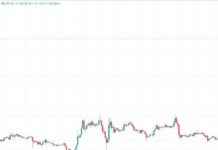The volume of ‘revolving’ loans has grown by 15% throughout 2022
MADRID, 5 Oct. (EUROPA PRESS) –
The new information obligations on ‘revolving’ credits will come into force this Thursday, October 6, six months after its publication in the Official State Gazette (BOE).
Circular 3/2022, of March 30, of the Bank of Spain developed a series of information obligations that entities must provide to their clients when marketing ‘revolving’ credit products, both before contracting and during the life of the contract.
The new regulation, which comes into force tomorrow, establishes that the entity will provide “a representative example” of the loan before the client contracts the ‘revolving’ credit, which includes information on the credit limit, the total amount owed , the interest rate applied, the APR, the repayment period and the installment to be paid.
The example presented by banks and credit institutions must show at least two financing alternatives. When the credit agreement includes two or more modalities of deferred payment with interest and at least one of them is the ‘revolving’ modality, it must include an example of financing for each modality.
For examples of loans with deferred payment through flexible periodic installments, the word ‘revolving’ must be expressly indicated. Likewise, the examples of financing will be determined based on the minimum fee established in the contract for that payment method and, to calculate the example, a credit limit of 1,500 euros will be used in general, unless the client has requested another amount. .
The new regulations also oblige entities to send periodic communications to their ‘revolving’ credit clients that include examples of savings scenarios.
Specifically, if the amortization fee is less than 25%, the entity has to provide information on three possible savings scenarios that will simulate the amount of the installments that would have to be paid if the amortization fee were increased by 20%, 50% and 100%.
The three scenarios will also indicate the total amount that would end up being paid in each of them, breaking down principal and interest, as well as the date on which the loan would be paid.
The ‘revolving’ cards provide the customer with a credit limit that can be repaid in installments through periodic installments that can be established as a percentage of the existing debt or as a fixed installment.
The debt derived from the credit is renewed monthly, reducing with installment payments and increasing with the use of the card and with the interest, commissions and expenses generated, which means that, if the monthly installment paid is very low compared to to the amount of the debt, the amortization of the principal is carried out over a very long term, raising the interest to be paid.
This has motivated the Bank of Spain, in addition to having warned consumers on numerous occasions that they should find out about the characteristics of ‘revolving’ cards before they are used and pay special attention to the interest rate applied and the payment methods that it offers, has included these new information transparency obligations for the marketing of these credits in its Circular 3/2022, of March 30.
The latest available data, consulted by Europa Press, show that the outstanding balance of credits with deferred payment and ‘revolving’ cards stood at 11,604 million euros in August, which represents an increase of 15.3% since the beginning of the year 2022.
The data for the month of August is 2% higher than that of July and 19% higher than that of a year earlier. Some experts attribute the increase in requests for ‘revolving’ cards to the rise in inflation, which stood at 10.5% in August, raising the cost of living for Spanish households.








